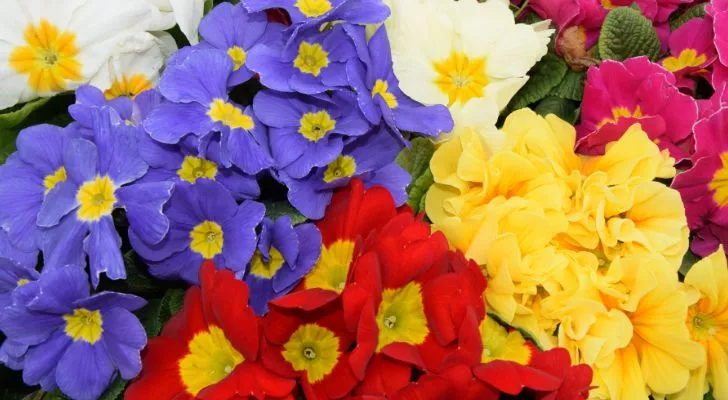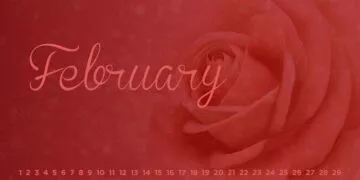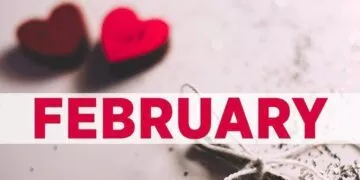February is the season of all things romance and love, and for the most part, roses take center stage. However, to everyone’s surprise, the birth flowers of this month are entirely different.
Instead, February babies get two vibrant early bloomers to choose from: violets and primroses.
Besides being beautiful, February’s birth flowers have a rich historical and cultural background. They’re also symbolic of love and affection, emphasizing the theme of the month.
Including violets or primroses in your birthday celebration gives it a deeper meaning. But the real magic comes when you know these blooms’ intriguing characteristics and meaning.
Therefore, buckle up and keep reading to discover these cool facts about February’s birth flowers.
10 Facts About Violets

Violets are classified under the plant genus Viola. This is a large group containing over 680 different types of flowers.
Some species of violets may only grow 2 inches (5.1 centimeters) high. On the other hand, taller varieties standing at over 20 inches (51 cm) tall exist.
Three US states, Illinois, New Jersey, and Rhode Island, have violets as their official state symbol. Wisconsin also uses another variety, the wood violet, as its state flower.
Although purple varieties of this flower are the most common, they could also be blue, white, reddish, and yellow. Violets may also sometimes have a mix of different colors.
The leaves and flowers of violets are edible, with a slightly sweet flavor that elevates dishes like puddings. But don’t try to consume the roots and seeds of the plant, as they contain potentially harmful compounds.
Ants carry mature violet seeds away, helping to establish fresh sprouts far from the parent plant. The ants are drawn by chemicals on the fleshy part of the seeds called elaiosome.
Violets were a symbol of the love between Napoleon Bonaparte and his first wife, Empress Josephine. He also made it the signature flower of his party, earning him the nickname Caporal Violette (“Corporal Violet”).
The smell of violets disappears only a few moments after getting the first whiff. This is because the ionone compound responsible for their fragrance temporarily blocks your ability to smell them.
Legend states that St. Valentine crushed these purple flowers to make ink to write letters to his followers while imprisoned. Therefore, violets were the original symbol of Valentine’s Day before roses took over.
In the early 20th century, New York’s Hudson Valley was dubbed the violet capital of the world. It housed hundreds of greenhouses that catered to the booming violet farming industry.
10 Facts About Primroses

Primroses belong to the large Primula genus in the Primulacae family, which contains about 600 flower species.
The name primrose originates from the Latin word primus, which translates to first. The appearance of these flowers typically ushers in the spring season as warmer temperatures arrive.
An old legend from England states that eating primrose will help you see fairies. And putting these flowers on your doorstep would get you a fairy’s blessings.
Primrose flowers and young leaves are usually sweet and safe to eat, but old leaves taste bitter. Be warned never to feed this plant to your dogs, cats, and even horses, as it’s toxic to them.
Primrose flowers can be blue, yellow, purple, red, white, pink, and orange. Some plants may also feature a blend of two different colors.
April 19 every year is Primrose Day, a British holiday in remembrance of the former prime minister, Benjamin Disraeli. After his death, Queen Victoria sent a primrose wreath to his funeral as they were his favorite.
Primroses were the flowers of love during the Middle Ages and were believed to be vital for making love potions.
One of the greatest English writers to walk the earth, William Shakespeare, had a soft spot for primroses. He mentioned them many times in his works.
During the Victorian era, primroses were the symbol of young love. Giving this flower to your love interest was a way to say you couldn’t live without them.
One side of the Austrian 5 euro cent coin features a primrose stalk, representing the country’s dedication to preserving the environment.
February babies have so much love to give, so it’s only fitting that their birth flowers are symbols of affection.
Just like this February’s gemstones, these flowers hold deep symbolic meanings for the celebrants and serve as excellent personal gifts.
So next time you celebrate a February birthday, ditch the dull old roses and grab a bouquet of violets and primroses.
After all, who wouldn’t want to receive a gift with such hidden depth and intriguing tales?


















